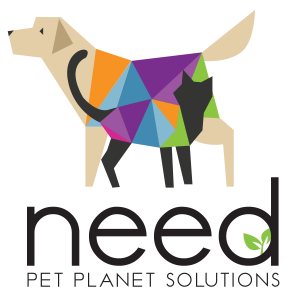Cancer is the most common disease that occurs in pets. It reduces their quality of life and shortens their life-span. Beginning early in a pet’s life to reduce the risks can have a huge impact on the time and quality of life a pet has with their family.
#1 – Choose Your Puppy or Kitten Wisely
There is nothing cuter than a puppy. Unfortunately, underneath all that cuteness lurks the potential for the bundle of joy to develop any number of diseases, including cancer, especially if your puppy/kitten is a purebred.
Breeding practices used by many purebred dog breeders in North America can be attributed, in part, to several serious health issues in pedigree dogs. Many backyard breeders and puppy mills add to the problem of unhealthy dogs.
With respect to cancer, these breeding practices have contributed to the number of breeds with a predisposition to different cancer types. While searching for a purebred dog or cat, make sure you do some homework to find a reputable breeder and understand your chosen breed’s potential health issues.
Individual families within a specific breed can also have an increased risk of cancer later in life. Trusted breeders avoid perpetuating the risk by breeding away from harmful genes.
If you adopt a mixed breed dog or cat and know which breeds are in their DNA, you can determine the potential health risk in that breed and how it may increase the risk for that specific pet.
#2 – Keep the Pet’s Weight Under Control
Obesity in dogs and cats, as in humans, has become epidemic. Obesity leads to any number of serious health issues, including diabetes and heart disease, and is one of the big reasons for the increase in cancer rates in dogs and cats.
Feeding low-quality pet food and treats and overfeeding are the two most significant contributors to pet obesity. There are a number of healthy dry pet food choices on the market. The best choices are biologically appropriate, high protein low carbohydrate recipes. Ingredients should be specific, animal proteins should be the first ingredients, and there should be no animal by-products, chemical food additives, or preservatives.
Another healthy option is feeding your pet a raw diet that includes quality protein sources such as chicken, beef, turkey, and organ meats and bones. Choose raw food from a reputable manufacturer that pays attention to where the ingredients are sourced and have food safety protocols.
Don’t overfeed your pet! Lifestyle, activity level, and age affect how much food your pet should receive. Remember that feeding recommendations on a bag of pet food are for the average pet. If your pet is overweight, feed less than the recommended amount and adjust from there. Also, offset the treats they receive during the day by reducing the daily recommended amount of food. It’s also a good idea to measure out the pet food to ensure your dog or cat gets the proper portion and no more.
#3 – Make Sure the Pet Gets Enough Exercise
Exercise is one of the best ways to combat obesity — a major contributor to the risk of cancer. Ensuring pets get enough exercise will help with everything from muscle tone to digestive health and behavior problems.
Experts say dogs need a minimum of 20 minutes of sustained, heart-pumping exercise, three times a week. Going for a walk is not always enough. Some suggestions include power walking, running, hiking, playing fetch or Frisbee, swimming, getting out to the off-leash park, or organized sports such as agility, flyball, or dock diving.
Always check with the veterinarian before starting a rigorous exercise routine to ensure the pet has no health issues that may be aggravated by exercise.
Cats need exercise too! Planned time for routine exercise every day for 15 to 20 minutes helps maintain proper weight, tones the muscles, and prevents the behavioral problems associated with boredom. Encouraging a cat’s natural instincts with toys and puzzles is an easy and effective way to encourage a cat to be more active.
#4 – Attend to a Pet’s Emotional Well-Being
Dogs and cats are supposed to have fun and stay active for life. While exercise provides an outlet for your pet’s energy and plays a huge roll in keeping them slim and trim, don’t forget about their emotional well-being. As the Guardian of a pet, our responsibility is to provide pets with a safe, stress-free, and loving environment and lots of mental stimulation.
Your pet needs to use their brain regularly for optimum health.
One-way Guardians can provide adequate mental stimulation include using food puzzles or toys when feeding or giving treats. Socializing a pet early and often, asking your dog to respond to commands before doing any activity, attend training classes, and take your dog to daycare can all provide every pet’s mental and emotional stimulation.
#5 – Provide an Eco-Friendly Environment
Dogs and cats are very much like infants and young children; they have small bodies, are closer to the ground, tend to put things in their mouths, and are usually more sensitive to toxins in the environment than adults. With their faster development and shorter lifespans, our pets can develop health problems much more rapidly from exposure to environmental toxins.
There are several ways you can help create an eco-friendly home for your pets and help lower their risk of developing cancer from toxins in the environment.
Choose household cleaning products that do not contain harmful chemicals that are known carcinogens, which cause cancer or promote cancer growth. Better yet, making cleaning products from simple, non-toxic ingredients such as cider vinegar, baking soda, and castile soap reduces the risk of toxin exposure.
Use grooming products free of harmful ingredients and natural flea and tick protection products. Keep your pet away from pesticides and herbicides outdoors. Choose safe toys for your pet, provide fresh, clean drinking water, and don’t smoke around your pet, whether in your car or at home.
____





